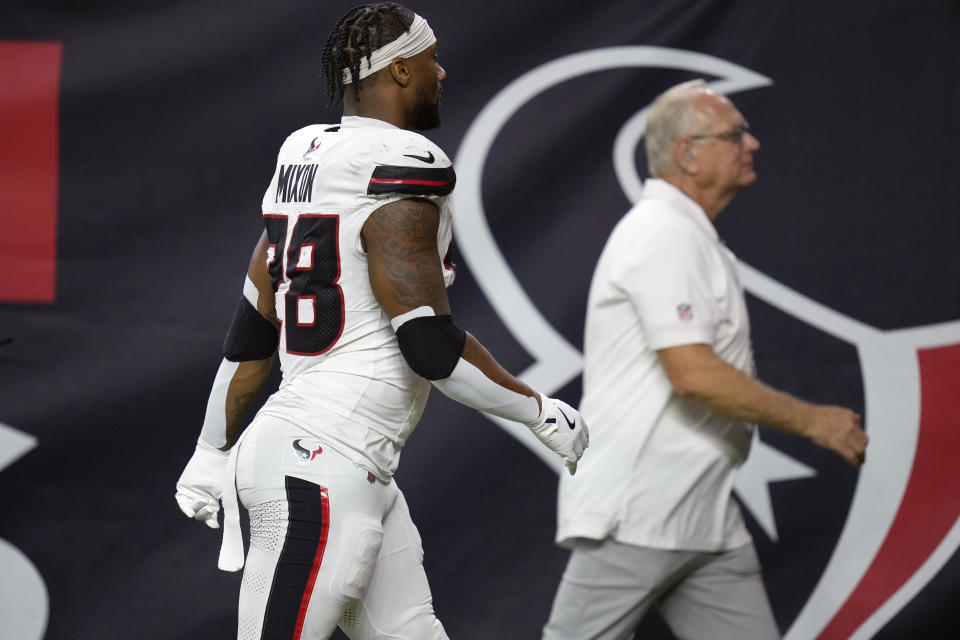One big story this offseason was the NFL’s elimination of the hip-drop tackle, a dangerous play that led to some high-profile injuries.
The problem, perhaps, is that it is difficult for referees to identify what a hip-drop tackle is in real time.
There were a few plays that weren’t called that appeared to be hip-drop tackles. Buffalo Bills quarterback Josh Allen thought he was the victim of one in Week 1 and argued with the officialsbut he didn’t get the penalty. Cincinnati Bengals receiver Ja’Marr Chase argued with officials after a tackle, earning him a 15-yard penalty, and might have been upset that a hip drop wasn’t called. Chase had no comment after the Bengals’ loss to the Kansas City Chiefs.
And the play on which Houston Texans running back Joe Mixon was injured Sunday night sure looked like the kind of play the NFL said would be penalized this season.
Mixon was taken down and had his foot pinned underneath him by Chicago Bears linebacker TJ Edwards. It looked like a classic hip-drop tackle. Mixon limped off the field and was taken to the locker room. But no flag was thrown to him.
It’s hard to watch that play and not think it was a banned hip-drop tackle. Both NBC announcers on Sunday night’s broadcast thought it was.
“The wrap, both legs swinging on the ground and the back of the leg,” NBC color analyst Cris Collinsworth said.
“Wrap, turn, weight release, landing on the legs,” broadcaster Mike Tirico continued. “Those are the four indicators in conjunction that get that hip-drop tackle knocked out of the game. All four indicators are there on that play. It’s very difficult for the officials to call it live on the field, but it’s something that can be called later in the week.”
It’s hard to pinpoint all the mechanics of a hip-drop tackle given the speed of the game, but it was added to the rulebook for a reason, and referees need to be able to spot it when it happens. It wouldn’t have helped Mixon and his injury, but it might have discouraged it in the future, which was the NFL’s intent.

